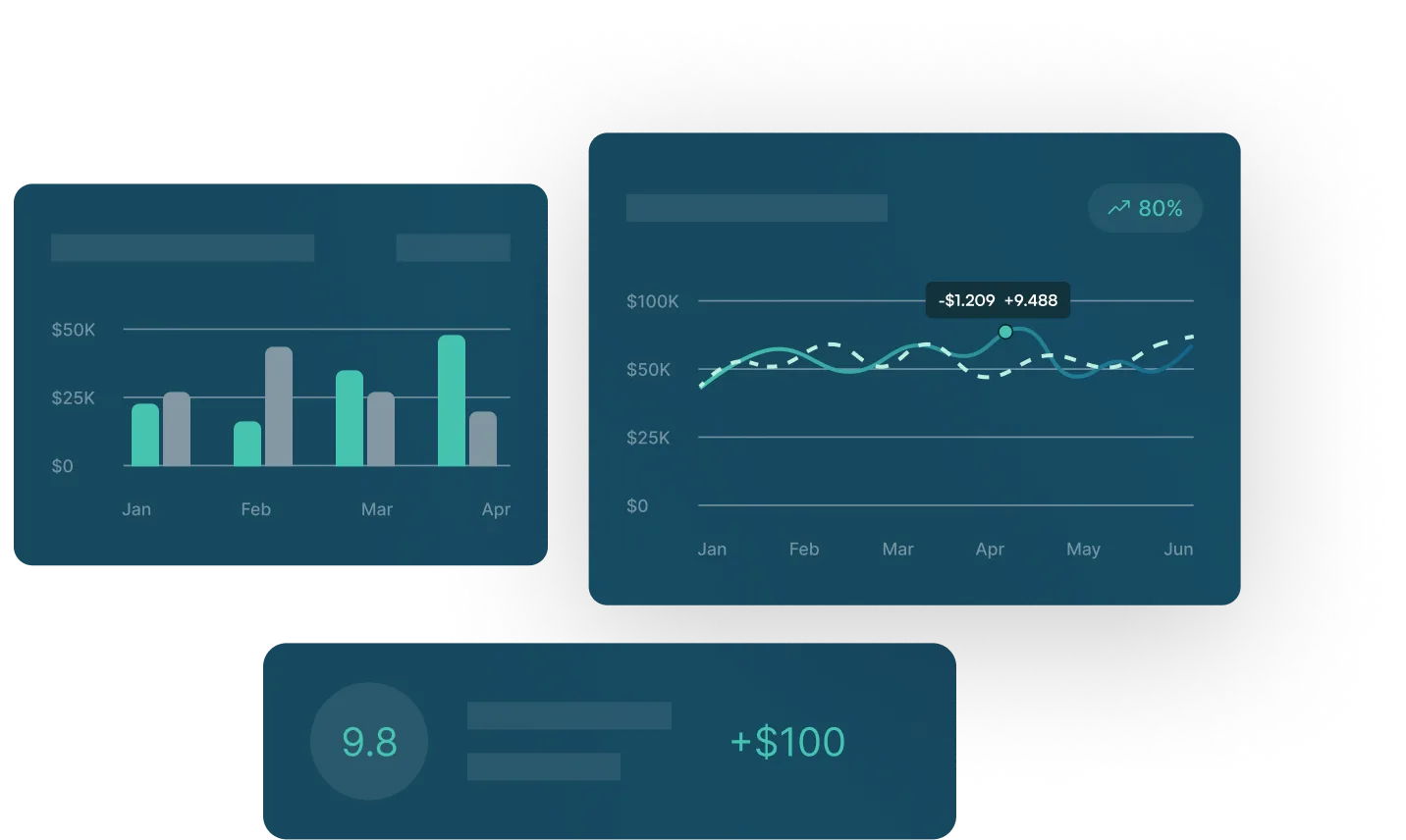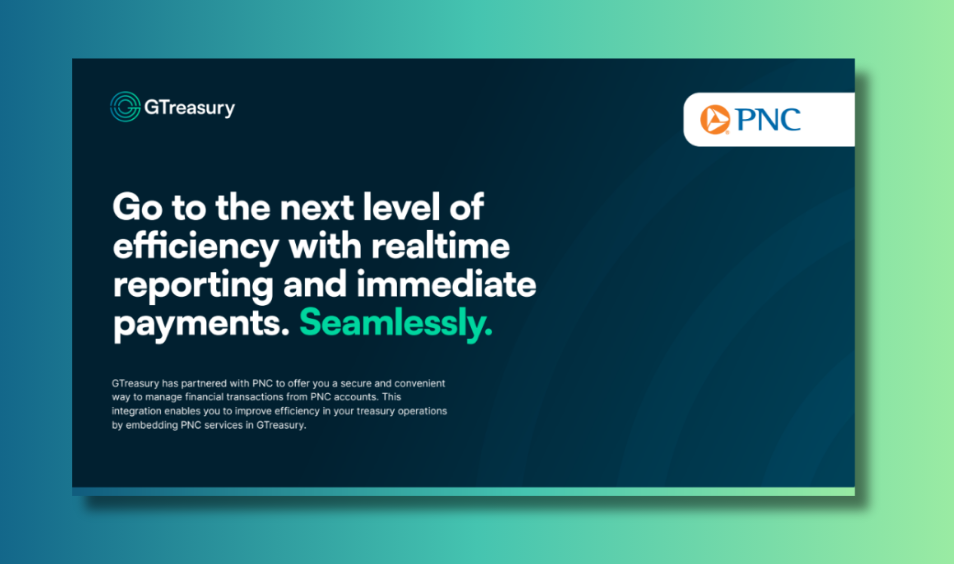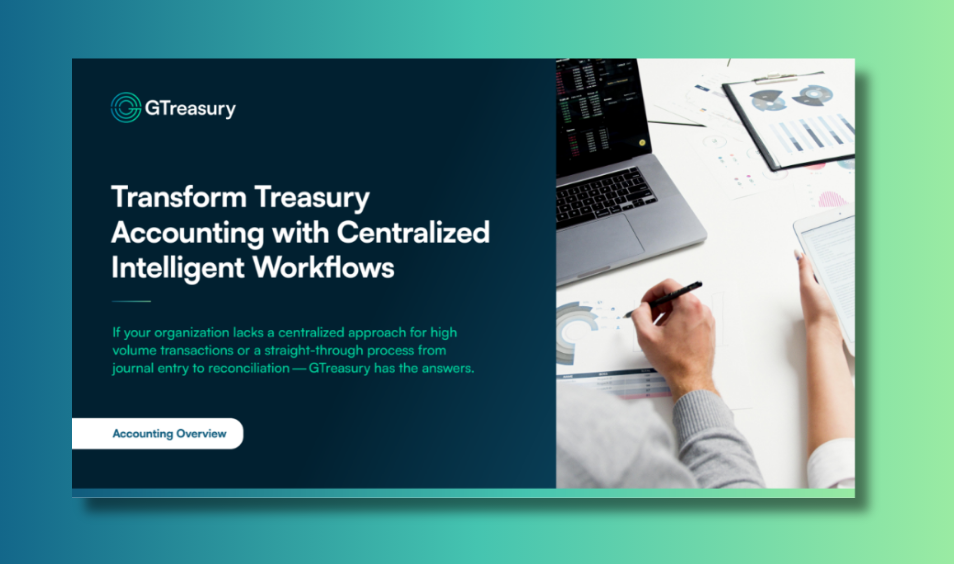Cash Flow Forecasting Template


A well-designed cash flow forecasting template can be valuable for understanding the basics of cash flow management. With this resource, finance teams can get a preliminary view of a business's key cash flow categories and begin to see what structured forecasting might look like.
However, there's a crucial reality modern finance teams must face: spreadsheet templates are actually just the beginning. Relying on static templates for critical cash flow decisions in today’s era of AI and innovation is like navigating with an outdated map. Every finance team has different business objectives, complexities, and real-time data needs that go far beyond what a basic template can provide.
Download our free cash flow forecast template below to explore the fundamentals. But as we'll show you in this article, true forecasting success requires moving beyond templates to intelligent, automated solutions. You'll gain an understanding of what a template should include, why it's insufficient for modern business needs, and how AI-powered forecasting can transform your approach.
Download your free cash flow forecast template [Excel]
What is a Cash Forecasting Template?
A forecasting template (also known as a cash forecasting model) is a blueprint that finance teams use for cash flow projection. Typically, the document sets out the key dimensions of a forecast model: the time horizon, time-period granularity, and cash flow categories.
The template sets out the key dimensions of a forecast model: the time horizon, the time-period granularity, and the cash flow categories that will be forecasted and reported on.

In the image above, the forecasting template columns reflect the reporting frequency of your forecast within a specific time period. Additionally, rows in the template present cash outflows and inflows. Typically, you’ll group all cash inflows as receipts and outgoing cash as payments or expenditures.
The two types of cash flow data are:
- Actual data: In the graphic above, actual data is displayed in the column furthest to the left.
- Forecast data: In the graphic above, forecast data is displayed in the columns on the right.
The cash flow data in a forecast template is determined by what your firm’s leadership wants to see in reports, like dividends, intercompany payments, taxes, and more.
Why is a Cash Flow Forecasting Template Important?
Instead of building out a forecasting model from scratch, use a cash forecasting template as a basis. This resource outlines which cash flow categories to track, so your forecast model is comprehensive.
Then, use the insights from your cash flow template to make informed cash-planning decisions. Based on your firm’s closing balance, for instance, you can determine creditworthiness or mobilize available cash for hiring more people.
Why Cash Forecasting Templates Can Fall Short in Modern Business
While templates help you understand cash forecasting concepts, they quickly become inadequate for real business needs, presenting issues including:
- Manual processes are error-prone: Spreadsheet-based forecasting relies heavily on manual data entry and updates, introducing significant risk of human error
- Limited real-time connectivity: Templates can't automatically pull data from your ERP, banking systems, or other critical data sources
- Limited analysis: Static templates can't identify patterns, detect anomalies, or provide actionable insights about forecast variances
- Scalability challenges: As your business grows across multiple locations, currencies, and business units, templates become unwieldy and unreliable
- Time-intensive maintenance: Finance teams spend countless hours updating, reconciling, and validating template data instead of focusing on strategic analysis
Instead of building out a forecasting process from scratch or struggling with manual templates, modern organizations need intelligent cash forecasting solutions. These platforms provide real-time data connectivity, automated processes, and AI-powered insights that templates simply cannot deliver.
How to Use Cash Flow Forecasting Templates as Learning Tools
While templates aren't suitable for ongoing business operations, they can help you understand forecasting fundamentals before implementing a proper solution. Here's how to use the downloadable template as a learning exercise:
Set Your Forecast Report’s Granularity
Your report’s granularity (the time intervals when you complete the reporting) depends on your forecast objectives.
If you’re focused on short-term liquidity planning, daily reporting granularity likely makes sense. With a longer reporting period like a weekly forecast, you may miss short-term liquidity shortfalls and leave your firm cash-strapped.
And if reporting granularity is too fine, it can muddy the waters and disguise important data trends. At the same time, long reporting intervals may lead you to miss important signals too.
The section below shows examples of report objectives and which frequency of creation is best for each.
Short-term liquidity planning
- Report granularity: Daily
- Cashflow classifications: High level flows and balances
- Frequency of creation: Twice a week
Interest and debt reduction
- Report granularity: Weekly
- Cashflow classifications: Management reporting categories and flows
- Frequency of creation: Weekly
Covenant and key date visibility
- Report granularity: Weekly
- Cashflow classifications: Management reporting categories and flows
- Frequency of creation: Weekly; more frequently approaching key date
Liquidity risk management
- Report granularity: Weekly for 13 weeks, then monthly for 3 months
- Cashflow classifications: High level flows and balances
- Frequency of creation: Monthly
Not sure which reporting frequency is best? Read on to learn about daily, monthly, and yearly forecasting.
Daily Cash Forecasting
Daily cash forecasting is a short-term cash flow model used for day-to-day cash management and liquidity planning. The model works best for businesses that operate on fine margins or tight working capital cycles (WCC) — like a firm in the pre-acquisition stage.
Because of its short time horizon, daily forecasting gives a granular view of cash that enables day-to-day decision-making. Different internal and external factors can lead you to consider daily cash forecasting.
- Internal: Excessive administration or delays in longer-term forecasts can lead to a lack of liquidity visibility. Daily cash forecasts provide quick insight into available operating capital for business expansion, like opening new branches, acquiring other companies, setting up plants, and more.
- External: If your firm just signed a new credit agreement or secured a revolving credit line, daily forecasting helps you manage day-to-day cash flows for faster loan repayments.
For a daily cash forecast, source data from ERP systems, AP/AR ledgers, bank files, payroll and billing systems, CRM tools, and more.
Monthly Cash Forecasting
Similar to daily forecasts, a monthly cash flow forecast is often used for cash planning and management reporting. The model is also a good fit if your company’s debt repayment plans involve covenant forecasting.
Monthly forecasts provide a balanced perspective since they are in between annual budgets and shorter forecasts like daily or weekly. That’s why forecasts done on a monthly basis are ideal for measuring if you’ll be able to honor your financial promises to investors, lenders, and others.
Data sources for monthly cash forecasts include budgets, historical data, business and sales plans, intercompany deal flows, and more.
Yearly Cash Forecasting
Over several 12-month periods (say, three to five years) you can assess the cash your firm needs for the long term. These cash requirements span across capital projects and growth strategies like setting up a new production plant or office building.
A yearly cash forecast is often a good foundation for creating future annual budgets because it presents year-to-year financing, operations, and investing trends.
Combine yearly cash forecasting with shorter forecast models to plan for multiple scenarios and create a rolling budget. When used together, these reports help you make more thorough cash plans.
Choose Your Cash Forecast Template Time Horizon
Along with setting reporting granularity, you’ll need to determine how much time your cash flow forecast will cover.
Forecast accuracy generally decreases with time, so the horizon for a short-term liquidity planning forecast ideally shouldn’t be long. In our experience, this type of forecast hardly covers more than 10 business days.
Like granularity, your forecast’s time horizon should align with the report’s objectives. Here are some typical forecast horizon and goal pairings:
Short-term liquidity planning
- Forecast horizon reporting date: 10 business days
- Report granularity: Daily
- Cashflow classification: High level flows and balances
- Frequency of creation: Twice a week
Interest and debt reduction
- Forecast horizon reporting date: 13 weeks
- Report granularity: Weekly
- Cashflow classification: Management reporting categories and flows
- Frequency of creation: Weekly
Covenant and key date visibility
- Forecast horizon reporting date: To next significant reporting date (at least)
- Report granularity: Weekly
- Cashflow classification: Management reporting categories and flows
- Frequency of creation: Weekly, more frequent approaching key date
Liquidity risk management
- Forecast horizon reporting date: 6 months
- Report granularity: Weekly for 13 weeks, then monthly for 3 months
- Cashflow classification: High level flows and balances
- Frequency of creation: Monthly
Determine the Cash Flow Categories You’ll Use in Your Forecast
A cash flow forecast covers receipts (incoming cash) and payments (outgoing cash). Within these two sections, there are a number of subcategories, including:
Receipts
- AR cash collections: the amount of unpaid sales invoices customers owe you
- Debt drawdown: any money you borrowed from available lines of credit
- Sales collections: invoice payments you received from businesses or individuals
Payments
- Capital expenditure: money you spent on purchasing or revamping fixed assets like land or buildings
- Payroll: cash you used to pay staff and contractors
- Taxes: the mandatory percentage of your income paid to tax authorities
- Debt repayment: money you used to pay back loans
- Intercompany payments: cash paid to a subsidiary firm
- One-off items: like expansion of a production facility
The Modern Solution: AI-Powered Cash Forecasting Software
While templates help you understand the basics, modern businesses need sophisticated, AI-powered cash forecasting solutions to thrive in today's competitive environment. GTreasury's Cash Forecasting platform, powered by GSmart AI, represents the evolution beyond spreadsheet templates.
Intelligent Cash Forecasting with GSmart AI
GSmart AI transforms cash forecasting from a manual, reactive process into an intelligent, proactive system:
- Automated data integration: Seamlessly connects to ERPs, banks, and other financial systems for real-time data accuracy
- Predictive accuracy: Achieves over 30% improvement in forecast accuracy compared to traditional methods
- AI-powered insights: Uses machine learning to identify patterns, predict customer payment behaviors, and detect anomalies
- Variance analysis automation: Automatically compares forecasts to actuals and provides intelligent explanations for discrepancies
GSmart Forecast Insights: Beyond Basic Forecasting Templates
Where templates leave you with static numbers, GSmart Forecast Insights provides dynamic, actionable intelligence:
Automated Variance Analysis
Instead of manually comparing forecast to actual data in spreadsheets, GSmart automatically identifies key variances across business units, time periods, and cash categories. The AI explains why variances occurred and provides actionable recommendations.
Real-time Anomaly Detection
GSmart proactively alerts finance teams to unexpected cash flow deviations before they impact liquidity planning. This goes far beyond what any template can provide.
Executive-Ready Narratives
Generate professional management reports and commentary instantly. Finance teams save hours previously spent creating board-ready summaries from template data.
Continuous Learning
The AI improves accuracy over time by learning from historical data, comments, and feedback loops—something impossible with static templates.
Trend Intelligence
Identifies patterns across weeks, regions, or customer segments, providing insights that would take days to uncover manually in spreadsheets.
From Templates to Transformation
The difference between using templates and implementing GSmart AI is transformational:
- Time Savings: Reduce manual forecasting tasks by over 90% through automation
- Accuracy Improvement: Achieve 30%+ better forecast accuracy with AI-powered predictions
- Risk Management: Receive proactive alerts on forecast deviations before they impact operations
- Strategic Focus: Free up finance teams to focus on high-value analysis instead of data compilation
GTreasury: The Complete Cash Forecasting Solution
Templates helped introduce you to cash forecasting concepts, but they're no match for the demands of modern business. GTreasury Cash Forecasting provides everything templates lack and more:
- Automated processes that eliminate manual errors and save valuable time
- Real-time connectivity across banks, ERPs, and treasury systems
- AI-powered insights through GSmart that continuously improve forecast accuracy
- Business unit-level forecasting for accurate long-term strategic planning
- Comprehensive analytics and reporting that go far beyond template capabilities
With rapid deployment capabilities and seamless integration in 90 days or less, GTreasury transforms cash forecasting from a time-consuming, error-prone process into a strategic advantage.
Schedule a free demo to see exactly how GTreasury works and discover why over 1,000 businesses across 160 countries have moved beyond templates to embrace the future of cash forecasting.
Cash Flow Forecasting Template
A well-designed cash flow forecasting template can be valuable for understanding the basics of cash flow management. With this resource, finance teams can get a preliminary view of a business's key cash flow categories and begin to see what structured forecasting might look like.
However, there's a crucial reality modern finance teams must face: spreadsheet templates are actually just the beginning. Relying on static templates for critical cash flow decisions in today’s era of AI and innovation is like navigating with an outdated map. Every finance team has different business objectives, complexities, and real-time data needs that go far beyond what a basic template can provide.
Download our free cash flow forecast template below to explore the fundamentals. But as we'll show you in this article, true forecasting success requires moving beyond templates to intelligent, automated solutions. You'll gain an understanding of what a template should include, why it's insufficient for modern business needs, and how AI-powered forecasting can transform your approach.
Download your free cash flow forecast template [Excel]
What is a Cash Forecasting Template?
A forecasting template (also known as a cash forecasting model) is a blueprint that finance teams use for cash flow projection. Typically, the document sets out the key dimensions of a forecast model: the time horizon, time-period granularity, and cash flow categories.
The template sets out the key dimensions of a forecast model: the time horizon, the time-period granularity, and the cash flow categories that will be forecasted and reported on.

In the image above, the forecasting template columns reflect the reporting frequency of your forecast within a specific time period. Additionally, rows in the template present cash outflows and inflows. Typically, you’ll group all cash inflows as receipts and outgoing cash as payments or expenditures.
The two types of cash flow data are:
- Actual data: In the graphic above, actual data is displayed in the column furthest to the left.
- Forecast data: In the graphic above, forecast data is displayed in the columns on the right.
The cash flow data in a forecast template is determined by what your firm’s leadership wants to see in reports, like dividends, intercompany payments, taxes, and more.
Why is a Cash Flow Forecasting Template Important?
Instead of building out a forecasting model from scratch, use a cash forecasting template as a basis. This resource outlines which cash flow categories to track, so your forecast model is comprehensive.
Then, use the insights from your cash flow template to make informed cash-planning decisions. Based on your firm’s closing balance, for instance, you can determine creditworthiness or mobilize available cash for hiring more people.
Why Cash Forecasting Templates Can Fall Short in Modern Business
While templates help you understand cash forecasting concepts, they quickly become inadequate for real business needs, presenting issues including:
- Manual processes are error-prone: Spreadsheet-based forecasting relies heavily on manual data entry and updates, introducing significant risk of human error
- Limited real-time connectivity: Templates can't automatically pull data from your ERP, banking systems, or other critical data sources
- Limited analysis: Static templates can't identify patterns, detect anomalies, or provide actionable insights about forecast variances
- Scalability challenges: As your business grows across multiple locations, currencies, and business units, templates become unwieldy and unreliable
- Time-intensive maintenance: Finance teams spend countless hours updating, reconciling, and validating template data instead of focusing on strategic analysis
Instead of building out a forecasting process from scratch or struggling with manual templates, modern organizations need intelligent cash forecasting solutions. These platforms provide real-time data connectivity, automated processes, and AI-powered insights that templates simply cannot deliver.
How to Use Cash Flow Forecasting Templates as Learning Tools
While templates aren't suitable for ongoing business operations, they can help you understand forecasting fundamentals before implementing a proper solution. Here's how to use the downloadable template as a learning exercise:
Set Your Forecast Report’s Granularity
Your report’s granularity (the time intervals when you complete the reporting) depends on your forecast objectives.
If you’re focused on short-term liquidity planning, daily reporting granularity likely makes sense. With a longer reporting period like a weekly forecast, you may miss short-term liquidity shortfalls and leave your firm cash-strapped.
And if reporting granularity is too fine, it can muddy the waters and disguise important data trends. At the same time, long reporting intervals may lead you to miss important signals too.
The section below shows examples of report objectives and which frequency of creation is best for each.
Short-term liquidity planning
- Report granularity: Daily
- Cashflow classifications: High level flows and balances
- Frequency of creation: Twice a week
Interest and debt reduction
- Report granularity: Weekly
- Cashflow classifications: Management reporting categories and flows
- Frequency of creation: Weekly
Covenant and key date visibility
- Report granularity: Weekly
- Cashflow classifications: Management reporting categories and flows
- Frequency of creation: Weekly; more frequently approaching key date
Liquidity risk management
- Report granularity: Weekly for 13 weeks, then monthly for 3 months
- Cashflow classifications: High level flows and balances
- Frequency of creation: Monthly
Not sure which reporting frequency is best? Read on to learn about daily, monthly, and yearly forecasting.
Daily Cash Forecasting
Daily cash forecasting is a short-term cash flow model used for day-to-day cash management and liquidity planning. The model works best for businesses that operate on fine margins or tight working capital cycles (WCC) — like a firm in the pre-acquisition stage.
Because of its short time horizon, daily forecasting gives a granular view of cash that enables day-to-day decision-making. Different internal and external factors can lead you to consider daily cash forecasting.
- Internal: Excessive administration or delays in longer-term forecasts can lead to a lack of liquidity visibility. Daily cash forecasts provide quick insight into available operating capital for business expansion, like opening new branches, acquiring other companies, setting up plants, and more.
- External: If your firm just signed a new credit agreement or secured a revolving credit line, daily forecasting helps you manage day-to-day cash flows for faster loan repayments.
For a daily cash forecast, source data from ERP systems, AP/AR ledgers, bank files, payroll and billing systems, CRM tools, and more.
Monthly Cash Forecasting
Similar to daily forecasts, a monthly cash flow forecast is often used for cash planning and management reporting. The model is also a good fit if your company’s debt repayment plans involve covenant forecasting.
Monthly forecasts provide a balanced perspective since they are in between annual budgets and shorter forecasts like daily or weekly. That’s why forecasts done on a monthly basis are ideal for measuring if you’ll be able to honor your financial promises to investors, lenders, and others.
Data sources for monthly cash forecasts include budgets, historical data, business and sales plans, intercompany deal flows, and more.
Yearly Cash Forecasting
Over several 12-month periods (say, three to five years) you can assess the cash your firm needs for the long term. These cash requirements span across capital projects and growth strategies like setting up a new production plant or office building.
A yearly cash forecast is often a good foundation for creating future annual budgets because it presents year-to-year financing, operations, and investing trends.
Combine yearly cash forecasting with shorter forecast models to plan for multiple scenarios and create a rolling budget. When used together, these reports help you make more thorough cash plans.
Choose Your Cash Forecast Template Time Horizon
Along with setting reporting granularity, you’ll need to determine how much time your cash flow forecast will cover.
Forecast accuracy generally decreases with time, so the horizon for a short-term liquidity planning forecast ideally shouldn’t be long. In our experience, this type of forecast hardly covers more than 10 business days.
Like granularity, your forecast’s time horizon should align with the report’s objectives. Here are some typical forecast horizon and goal pairings:
Short-term liquidity planning
- Forecast horizon reporting date: 10 business days
- Report granularity: Daily
- Cashflow classification: High level flows and balances
- Frequency of creation: Twice a week
Interest and debt reduction
- Forecast horizon reporting date: 13 weeks
- Report granularity: Weekly
- Cashflow classification: Management reporting categories and flows
- Frequency of creation: Weekly
Covenant and key date visibility
- Forecast horizon reporting date: To next significant reporting date (at least)
- Report granularity: Weekly
- Cashflow classification: Management reporting categories and flows
- Frequency of creation: Weekly, more frequent approaching key date
Liquidity risk management
- Forecast horizon reporting date: 6 months
- Report granularity: Weekly for 13 weeks, then monthly for 3 months
- Cashflow classification: High level flows and balances
- Frequency of creation: Monthly
Determine the Cash Flow Categories You’ll Use in Your Forecast
A cash flow forecast covers receipts (incoming cash) and payments (outgoing cash). Within these two sections, there are a number of subcategories, including:
Receipts
- AR cash collections: the amount of unpaid sales invoices customers owe you
- Debt drawdown: any money you borrowed from available lines of credit
- Sales collections: invoice payments you received from businesses or individuals
Payments
- Capital expenditure: money you spent on purchasing or revamping fixed assets like land or buildings
- Payroll: cash you used to pay staff and contractors
- Taxes: the mandatory percentage of your income paid to tax authorities
- Debt repayment: money you used to pay back loans
- Intercompany payments: cash paid to a subsidiary firm
- One-off items: like expansion of a production facility
The Modern Solution: AI-Powered Cash Forecasting Software
While templates help you understand the basics, modern businesses need sophisticated, AI-powered cash forecasting solutions to thrive in today's competitive environment. GTreasury's Cash Forecasting platform, powered by GSmart AI, represents the evolution beyond spreadsheet templates.
Intelligent Cash Forecasting with GSmart AI
GSmart AI transforms cash forecasting from a manual, reactive process into an intelligent, proactive system:
- Automated data integration: Seamlessly connects to ERPs, banks, and other financial systems for real-time data accuracy
- Predictive accuracy: Achieves over 30% improvement in forecast accuracy compared to traditional methods
- AI-powered insights: Uses machine learning to identify patterns, predict customer payment behaviors, and detect anomalies
- Variance analysis automation: Automatically compares forecasts to actuals and provides intelligent explanations for discrepancies
GSmart Forecast Insights: Beyond Basic Forecasting Templates
Where templates leave you with static numbers, GSmart Forecast Insights provides dynamic, actionable intelligence:
Automated Variance Analysis
Instead of manually comparing forecast to actual data in spreadsheets, GSmart automatically identifies key variances across business units, time periods, and cash categories. The AI explains why variances occurred and provides actionable recommendations.
Real-time Anomaly Detection
GSmart proactively alerts finance teams to unexpected cash flow deviations before they impact liquidity planning. This goes far beyond what any template can provide.
Executive-Ready Narratives
Generate professional management reports and commentary instantly. Finance teams save hours previously spent creating board-ready summaries from template data.
Continuous Learning
The AI improves accuracy over time by learning from historical data, comments, and feedback loops—something impossible with static templates.
Trend Intelligence
Identifies patterns across weeks, regions, or customer segments, providing insights that would take days to uncover manually in spreadsheets.
From Templates to Transformation
The difference between using templates and implementing GSmart AI is transformational:
- Time Savings: Reduce manual forecasting tasks by over 90% through automation
- Accuracy Improvement: Achieve 30%+ better forecast accuracy with AI-powered predictions
- Risk Management: Receive proactive alerts on forecast deviations before they impact operations
- Strategic Focus: Free up finance teams to focus on high-value analysis instead of data compilation
GTreasury: The Complete Cash Forecasting Solution
Templates helped introduce you to cash forecasting concepts, but they're no match for the demands of modern business. GTreasury Cash Forecasting provides everything templates lack and more:
- Automated processes that eliminate manual errors and save valuable time
- Real-time connectivity across banks, ERPs, and treasury systems
- AI-powered insights through GSmart that continuously improve forecast accuracy
- Business unit-level forecasting for accurate long-term strategic planning
- Comprehensive analytics and reporting that go far beyond template capabilities
With rapid deployment capabilities and seamless integration in 90 days or less, GTreasury transforms cash forecasting from a time-consuming, error-prone process into a strategic advantage.
Schedule a free demo to see exactly how GTreasury works and discover why over 1,000 businesses across 160 countries have moved beyond templates to embrace the future of cash forecasting.

See GTreasury in Action
Get connected with supportive experts, comprehensive solutions, and untapped possibility today.





























.jpg)
.png)


























.png)




.jpeg)

.jpeg)











.jpeg)


.jpeg)







.jpeg)


.jpeg)









.jpeg)















.png)





